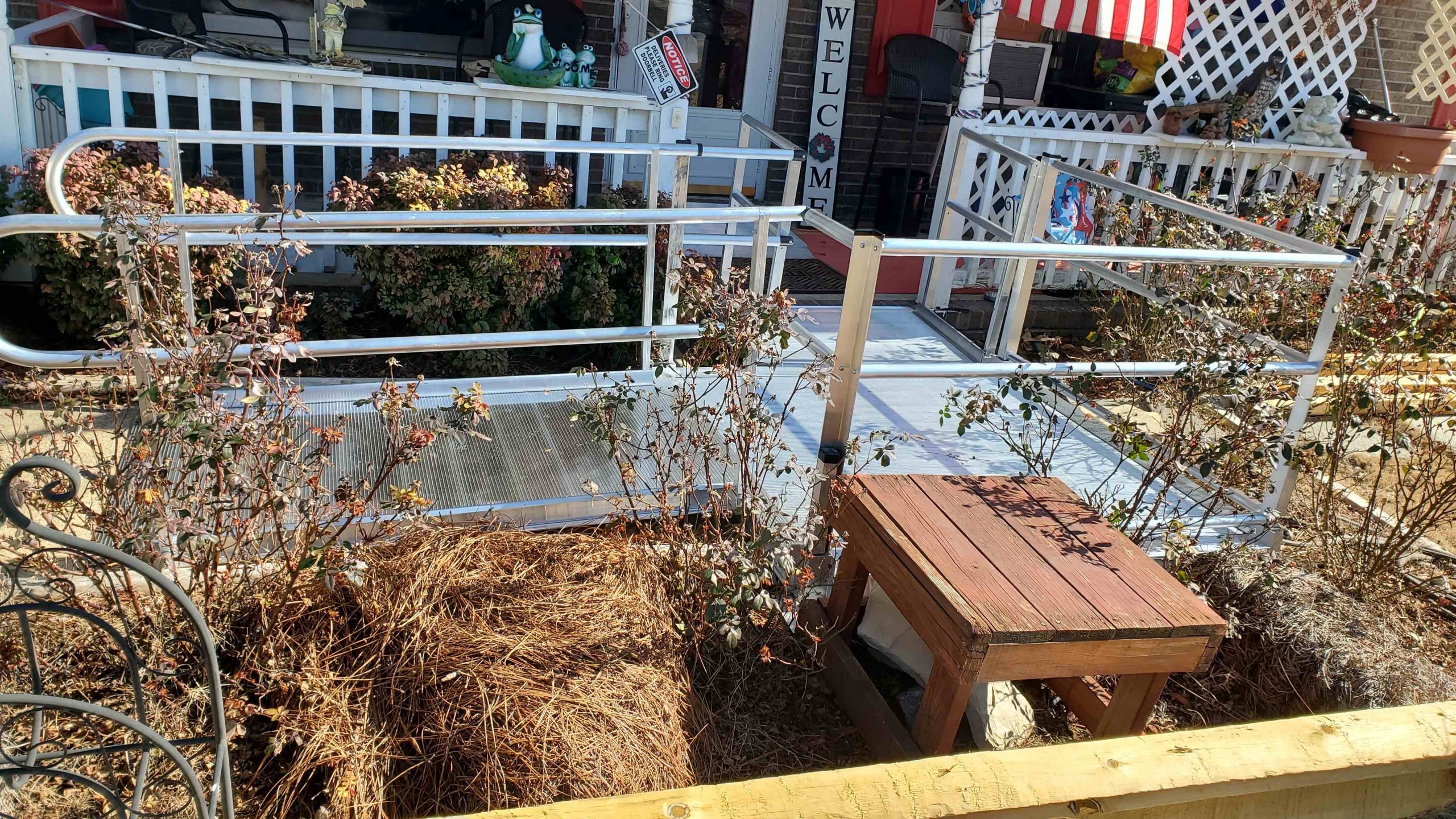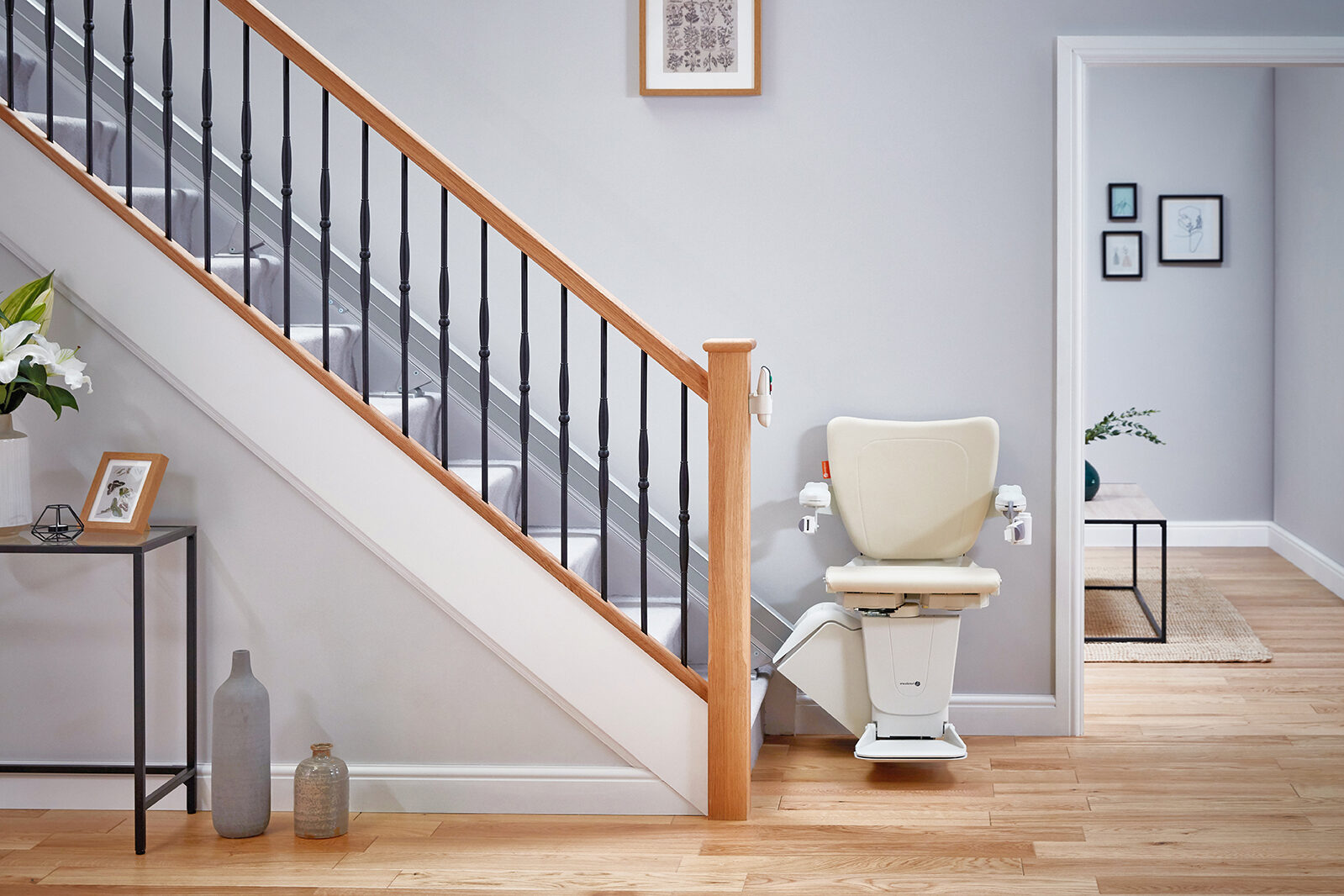These days, there are almost unlimited choices when it comes to choosing a new stairlift. While there are so many types of stairlifts in the market for you to consider, one can start by filtering their choices according to whether a curved or straight stairlift is more compatible with their home. Both options are popular, but curved stairlifts are more personalized and customizable, because they are likely built to fit the unique structure of your staircase. However, regardless of which type of stairlift you ultimately choose, it will definitely help to learn about their various controls and functions, as well as the available types.
Straight Seated Stairlifts
In terms of installing a stairlift, straight staircases are the simplest on which to have them installed. This ease of installation is down to the fact that straight seated stairlifts typically only operate on a straight railing. They come with comfortable seats that are usually attached to the system itself and are fairly simple to use. From a cost perspective, this ease of installation is what usually makes this sort of stairlift the most affordable. It is important to note that if your staircase is too narrow, or if you have doors at the top of your stairs, that obstruct the movement of the stairlift, straight seated stairlifts might not be a suitable choice for your home. In the event your staircase is mostly straight but curves slightly at either the top or bottom, you can always opt to install an external platform. Straight seated stairlifts are typically battery-operated, and will recharge on their own when returned to their charging point, usually located at either end of the staircase.
Curved Seated Stairlifts
If you require your stairlift to move round a corner for greater convenience, then a curved stairlift would be a better option. Similar to straight seated stairlifts, curved seated stairlifts are also battery-operated and move along the railing. However, in order to install a stairlift that moves in line with its curved rails, you would have incur a higher cost outlay, for this bespoke element. Typically, every extra corner that you need to account for, would double the installation cost of this option.
Standing Stairlifts
If you find that the staircases in your home are way too narrow to install the above options, you would be better off choosing a standing stairlift, which takes up much less space. However, you will still need to pay attention to several factors. For example, you will have to make sure that your staircase has enough headroom to cater to the height of your outstretched, standing body.
This is a great option for people suffering from health problems such as arthritis, which might make it extremely hard to bend the knees. As such, standing while moving up and down the stairs would be more bearable. Furthermore, these stairlifts often come with ledges and handrails that can help to maintain your balance. However, if you have problems with your balance or suffer from vertigo, this might not be the best choice for you.






